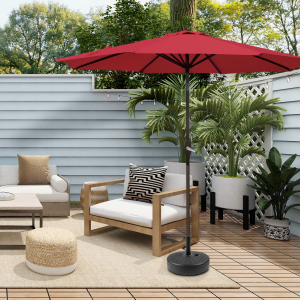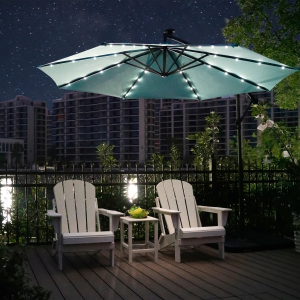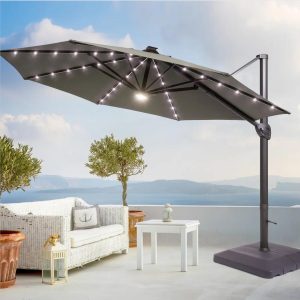More
The Influence of Fabric Choice on Sun Protection: Enhancing the Function of Parasols
The Influence of Fabric Choice on Sun Protection: Enhancing the Function of Parasols
Introduction:
As we spend more time outdoors, protecting ourselves from the harmful effects of the sun’s rays becomes paramount. Parasols provide a stylish and practical solution, offering shade and sun protection in various outdoor settings. However, not all parasol fabrics are created equal when it comes to shielding us from the sun’s UV rays. In this article, we will explore the influence of different fabrics on the sun protection function of parasols, helping you make informed decisions to maximize your sun safety and enjoyment under the shade.
Understanding UV Radiation:
Before diving into the influence of fabric choice, it’s important to understand the nature of UV radiation. The sun emits two types of harmful ultraviolet (UV) rays: UVA and UVB. Prolonged exposure to these rays can lead to sunburn, premature aging, and an increased risk of skin cancer. Therefore, selecting the right fabric for your parasol becomes crucial in providing effective sun protection.
-
Polyester Fabric: Polyester is a popular choice for parasol fabrics due to its durability, affordability, and wide availability. In terms of sun protection, polyester fabrics can provide good UV resistance, especially when treated with additional UV-blocking coatings or dyes. Look for parasols made with polyester fabric that offers a UPF (Ultraviolet Protection Factor) rating of 30 or higher, as this indicates effective sun protection.
-
Acrylic Fabric: Acrylic fabrics are known for their vibrant colors and resistance to fading, making them a popular choice for outdoor umbrellas. When it comes to sun protection, acrylic fabrics offer excellent UV resistance. Look for parasols made with acrylic fabric that has been specifically designed to block out harmful UV rays. These fabrics typically have a UPF rating of 50 or higher, providing superior sun protection for extended periods of outdoor exposure.
-
Olefin Fabric: Olefin fabrics are lightweight, breathable, and resistant to mold and mildew, making them suitable for outdoor use. In terms of sun protection, olefin fabrics offer good UV resistance. Look for parasols made with olefin fabric that has been treated or coated to enhance its UV-blocking properties. Aim for a UPF rating of 30 or higher to ensure effective sun protection while enjoying the outdoors.
Additional Tips:
-
Choose Darker Colors: Darker-colored parasol fabrics tend to absorb and block more UV radiation compared to lighter shades. Consider selecting fabrics in deeper tones like navy blue, black, or dark green for enhanced sun protection.
-
Seek Certified Fabrics: Look for parasols that feature fabrics certified by reputable testing organizations for their sun protection capabilities. These certifications, such as the Skin Cancer Foundation’s Seal of Recommendation, ensure that the fabric has undergone rigorous testing and meets specific sun protection standards.
-
Regular Maintenance: Keep in mind that even high-quality UV-resistant fabrics may lose some of their sun protection properties over time due to wear and tear, exposure to elements, or improper cleaning. Regularly inspect and clean your parasol according to the manufacturer’s instructions to maintain its sun protection effectiveness.
Conclusion:
Choosing the right fabric for your parasol plays a vital role in maximizing sun protection and ensuring your outdoor comfort. Polyester, acrylic, and olefin fabrics all offer varying levels of UV resistance, with acrylic fabric generally providing superior sun protection. When selecting a parasol, consider the fabric’s UPF rating, opt for darker colors, and seek certified fabrics for added assurance. Remember to regularly maintain your parasol to prolong its sun protection capabilities. By making informed fabric choices, you can enjoy the shade of your parasol while minimizing the risks associated with sun exposure, creating a safe and enjoyable outdoor environment.











